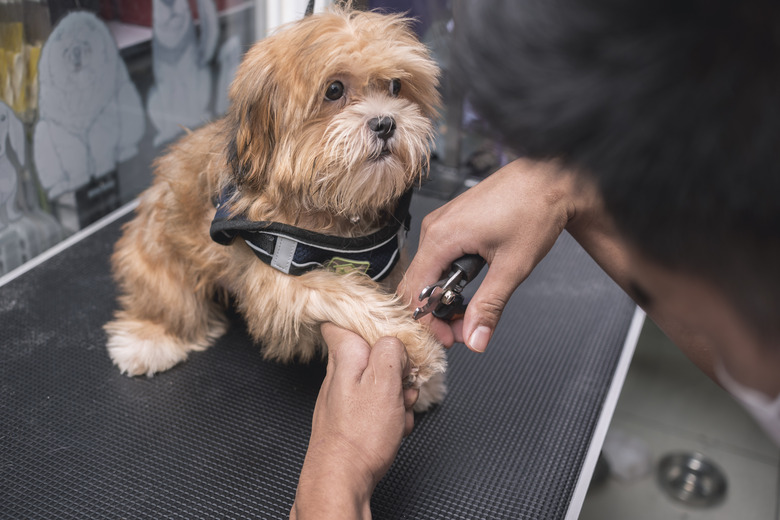Dog Grooming Clippers Vs. Human Clippers
We may receive a commission on purchases made from links.
At first glance, your dog groomer's clippers might seem just like the ones the barber uses for trimming your hair. A closer look shows differences, such as a different blade design to prevent pulling a pet's hair. Pet clippers have motors and blades designed to cut a variety of fur types. As a result, their price can be nearly 1.5 times as high as human hair clippers. To use the right clipper for a dog, you'll need to do some research. You may need more than one clipper for individual dogs.
Pet clippers vs. human clippers
Pet clippers vs. human clippers
While humans have one type of hair on their heads — known as terminal hair — pets have several types on their bodies. Bristle is the durable layer of guard hairs that make up the exterior of a dog's coat, protecting an undercoat known as wool. Whiskers and other coarse long hairs on the face are another type of hair known as vibrissae. Some dogs such as Yorkshire terriers have hair similar to humans.
Just as you would not use pet clippers for hair on a human, you would also not use human clippers on pets. Don't cut corners by using a tool made for something else to do double-duty as a pet grooming tool. Choosing between dog grooming clippers vs. human clippers is key. Get the right tool for the job, and your dog will thank you.
What's your clipper speed?
What's your clipper speed?
Pet clippers accommodate the aforementioned different types of hair with variable-speed motors and interchangeable blades. High speeds up to 5,000 strokes per minute give a smooth sheen for finishing the cut. Lower speeds allow the groomer to work on tender areas such as face and feet while creating less heat and vibration.
Cool off that motor
Cool off that motor
A haircut with human clippers can take just a few minutes when executed by an experienced barber. The clippers are then shut off to cool down before the next customer takes the chair. Clipping a pet's entire body can be a much longer endeavor, so pet clippers are designed for longer use without overheating or getting hot in the groomer's hand. The motors have baffles to help reduce both vibration and sound. This not only reduces the fear factor for skittish dogs, but keeps the groomer's hand from tiring as easily.
Different types of blades
Different types of blades
Clipper blades for human hair have finer teeth. Many clippers come with a standard blade in size No. 000, which clips hair 0.2 millimeters — 0.008 inches — away from the scalp. Such a fine blade would get caught up in a pet's hair, pulling it. Many pet clippers come with a No. 10 blade, which leaves hair 1/16 inch from the pet's body. Both hair and pet clipper blades come in fine tooth or skip tooth varieties.
For pets, skip tooth blades have wider teeth for cutting through mats without pulling the fur. Skip tooth blades for humans texturize the hair. Fine tooth blades leave a smooth texture on pets when finishing the coat, and have the letter F after the blade size embossed on the blade. Human clipper fine tooth blades do not indicate the letter F on the blade.
Other grooming accessories
Other grooming accessories
Grooming combs fit over the blade to deliver an even cut. Pet combs designed to cut from 1/16 inch to 2 inches are common in a dog groomer's clipper kit. Combs designed for human clippers generally are 1 inch or less. For longer-haired dogs, or those susceptible to matting, try a de-matting comb. Scissors and grooming shears are also a must-have item in any groomer's toolkit.
